Ivan Čuk
Editorial
Thomas Heinen, Nadja Walter, Linda Hennig & Damian Jeraj
SPATIAL PERCEPTION OF WHOLE-BODY ORIENTATION DEPENDS ON GYMNASTS’ EXPERTISE
Jaroslav Krištofič, Tomáš Malý, František Zahálka
THE EFFECT OF INTERVENTION BALANCE PROGRAM ON POSTURAL STABILITY
Jonas Rohleder, Tobias Vogt
TEACHING NOVICES THE HANDSTAND: A PRACTICAL APPROACH OF DIFFERENT SPORT-SPECIFIC FEEDBACK CONCEPTS ON MOVEMENT LEARNING
María Alejandra Ávalos Ramos, Lilyan Vega Ramírez
STRATEGIES FOR LEARNING GYMNASTIC SKILLS THROUGH TECHNOLOGIES IN INITIAL TEACHER TRAINING
Sunčica Delaš Kalinski, Almir Atiković, Igor Jelaska
GENDER DIFFERENCES IN CONSECUTIVE PARTICIPATION IN ARTISTIC GYMNASTICS AT THE OLYMPIC GAMES FROM 1996 TO 2016
Bojan Leskošek, Ivan Čuk & César J.D. Peixoto
INTER-RATER RELIABILITY AND VALIDITY OF SCORING MEN\'S INDIVIDUAL TRAMPOLINE ROUTINES AT EUROPEAN CHAMPIONSHIPS 2014
Tomaž Pavlin
HISTORICAL OVERVIEW OF GYMNASTICS AND (SCHOOL) PHYSICAL EDUCATION IN SLOVENIA
Vasilios Kaimakamis, George Dallas, Dimitris Kaimakamis
FORMS OF AND EXERCISES ON THE HORIZONTAL BAR DURING THE SECON HALF OF THE 19th CENTURY
Angela Tsopanidou, Kalliopi Theodorakou, Elias Zacharogiannis
HEART RATE RESPONSE DURING A VINYASA YOGA SESSION
Mauricio Santos Oliveira, Yan Tavares Galdino da Silva & Paula Cristina da Costa Silva
PURSUING A GYMNASTICS FOR ALL AND BY ALL
Ivan Čuk
Editorial
With the New Year we are celebrating 10 years of Science of Gymnastics Journal’s existence. When we started our journal, we had no idea how long we would be able to publish articles about gymnastics. It seems that the seeds have been well nurtured and today we are proud that we can be of assistance in the international exchange of knowledge, between the science and practice in gymnastics.
In this issue we have ten articles with authors from Spain, Greece, Croatia, Bosnia and Herzegovina, the Czech Republic, Portugal, Germany, Brazil and Slovenia. Articles cover psychology (motor learning), history, philosophy (gymnastics for all), metrology (judging), physiology (heart rate during exercises), kinesiology (balance). Among disciplines in gymnastics most are dealing with man and women artistic gymnastics, but we have also article on trampolining and general gymnastics. As gymnastics derived from the Greek and Asian tradition, we also include an article on Yoga exercises.
For our October issue we are preparing a special issue about gymnastics at the Olympic Games, with special guest editors Myrian Nunomura and Laurita Marconi Schiavon from Brazil to remember the OG in Rio 2016.
Anton Gajdoš prepared a new contribution to the history of gymnastics, refreshing our knowledge of Abie Grossfeld, a gymnast, coach, judge, researcher and passionate gymnastics fan from the USA.
Our fellow researchers were hard working and published a few new books. Istvan Karacsony wrote ‘130 years of Hungarian Gymnastics’ - 904 pages with 4000 pictures/photos; under editor Monem Jemni the new edition of Science of Gymnastics is published; Juraj Kremnický and Sońa Kremnická wrote ‘Impact of specialized program on changes of gymnastics skills and development of physical abilities of young gymnasts’ and Ivan Čuk and Aleks Leo Vest published ‘Prevarani sokoli’ (Cheated Sokols) about how communists took over the Sokol organisation in Slovenia.
Just to remind you, if you quote the Journal: its abbreviation on the Web of Knowledge is SCI GYMN J. I wish you pleasant reading and a lot of inspiration for new research projects and articles.
Thomas Heinen, Nadja Walter, Linda Hennig & Damian Jeraj
SPATIAL PERCEPTION OF WHOLE-BODY ORIENTATION DEPENDS ON GYMNASTS’ EXPERTISE
The perception of spatial orientation of the body is a fundamental process in the precise performance of complex motor tasks, such as those found in acrobatic sports. While visual information is thought to be an important informational source when performing gymnastics skills, it is still questionable, which role visual information plays in the perception of spatial orientation in matters of gymnastics expertise and task specificity. Thus, this study targets the question, which role visual information plays in the perception of spatial orientation as a function of specific task demands and gymnastics expertise. High-skilled and low-skilled gymnasts were compared in their estimation of body tilt while being rotated about the transverse axis and the anterior-posterior axis in a human gyroscope with either full visual information available or occluded visual information. Results revealed that high-skilled gymnasts exhibited a better estimation of body tilt as compared to low-skilled gymnasts. Estimated tilt angles varied as a function of rotation axis and expertise, but not as a function of visual information. It was concluded that an increased spatial orientation ability may result from an increased sensitivity in individual sensory systems, and/or from an optimized processing of interacting sensory information that is specific to gymnasts’ experience with particular motor tasks and the corresponding task demands.
Keywords: human gyroscope, artistic gymnastics, task demands, task specificity.
Jaroslav Krištofič, Tomáš Malý, František Zahálka
THE EFFECT OF INTERVENTION BALANCE PROGRAM ON POSTURAL STABILITY
The study is focused on evaluation of the effect of intervention balance program on postural stability (PS) among university students of “Specialization of gymnastic sports”. The experimental group (n = 18) performed a specific balance program in addition to their regular training sessions and the control group (n = 15) underwent their normal sport regimen. The multi-sensory FOOTSCAN platform was used for the posturographic examination. We evaluated the parameters Centre of Pressure (COP) in the tests: narrow standing position with (NS-VC) and without (NS-WC) visual control, flamingo stance on the preferred leg (FPL) and non-preferred leg (FNL). The results revealed a significant effect of time on changes in PS in bipedal tests regardless of group and visual control (F1,62 = 4.65, p = 0.03, η2p = 0.07). Visual control had a significant effect on PS in both groups (F1,62 = 12.55, p = 0.001, η2p = 0.17). The intervention program had a significant effect on PS in one leg standing position (FPL: COPpre-test = 1006.01 ± 396.17 mm, COPpost-test = 875.78 ± 284.24 mm, t17 = 2.34, p<0.05 ; FNL: COPpre-test = 1102.44 ± 323.82 mm, COPpost-test = 987.89 ± 357.63 mm, t17 = 2.20, p<0.05) and test NS-WC (COPpre-test = 145.67 ± 34.91 mm, COPpost-test = 128.89 ± 36.03 mm, t17 = 3.26, p<0.05). In the control group, we found a significant improvement only for FNL test (p<0.05). The results of study showed that even a low volume specific balance program performed in addition to regular training sessions may also lead to postural stability enhancement.
Keywords: postural stability; gymnastics; balance program; visual control; balance assessment
Jonas Rohleder, Tobias Vogt
TEACHING NOVICES THE HANDSTAND: A PRACTICAL APPROACH OF DIFFERENT SPORT-SPECIFIC FEEDBACK CONCEPTS ON MOVEMENT LEARNING
Due to rare evidence-based implications for the application of augmented feedback in gymnastics teaching, this study investigated whether standardised tactile-verbal feedback vs. visual-comparative feedback short-term enhance novel gymnasts’ handstand postural performance and motor imagery. Twenty-six students (7 females, 19 males) were randomly assigned to the tactile-verbal feedback (age: 22.7 ± 3.9 years) or visual-comparative feedback (age: 21.9 ± 1.8 years) group (each n = 13), performing a pre-post designed experimental session of handstand trials. Conducting goniometric analyses for hip, shoulder and head position, feedback effects were monitored using video capture and a motion-doll. Shoulder positioning enhanced after receiving tactile-verbal feedback (p < .01), whereas shoulder angle imagery enhanced following visual-comparative feedback (p < .05). Furthermore, significant correlations between postural performance and motor imagery were found for head position after receiving tactile-verbal feedback (p < .01), whereas hip angle postural performance and motor imagery correlated significantly following visual-comparative feedback (p < .01). Tactile-verbal feedback and visual-comparative feedback effect several issues of motor learning in different manners; however, this is true even in a short-term approach. Thus, practical recommendations are suggested to consider combined feedback concepts to allow comprehensive handstand acquisition.
Keywords: gymnastics, postural stability, balance program;motor imagery, skill assessment.
María Alejandra Ávalos Ramos, Lilyan Vega Ramírez
STRATEGIES FOR LEARNING GYMNASTIC SKILLS THROUGH TECHNOLOGIES IN INITIAL TEACHER TRAINING
The objective of this research was to present the study carried out for groups of first year students of the degree of Physical Activity and Sport Sciences of the University of Alicante (Spain). The purpose of the project was to determine the usefulness of self-assessment and the peer evaluation in teaching and learning of gymnastic skills. The methodology used was quantitative and qualitative. Analysis of Qualitative Data (AQUAD 6) software was employed to analyse the qualitative data and the office software Microsoft Excel for MAC ( 2015 Microsoft, Version 15.32) was used to the quantitative data. Observation as a strategy of information collection and the subsequent analysis of what is observed is an essential element in the process. Similarly, the use of technological instruments such as video camera and smart phone, the latter within the reach of the majority of students, were a facilitating element of the activity. On the other hand, students made a critical reflection on the method used by teachers, indicating under their perspective the strengths and weaknesses of the whole process. Audio-visual strategies and media have been such a positive issue in this study as well as self-assessment and peer evaluation, as they are adequate strategies to contribute to a proficient learning and management of the information.
Keywords: Coevaluation, self-assessment, technological instruments, artistic gymnastics, regulation of learning
Sunčica Delaš Kalinski, Almir Atiković, Igor Jelaska
GENDER DIFFERENCES IN CONSECUTIVE PARTICIPATION IN ARTISTIC GYMNASTICS AT THE OLYMPIC GAMES FROM 1996 TO 2016
The main goal of a gymnast’s career is participation in the Olympic Games (OG) at least once. Survey results determined a significant difference between genders in the number of gymnasts who competed in only one OG (277 males and 408 females); also, between those who consecutively participated in two OG (104 males and 70 females), three OG (28 males and 11 females), and four OG (six males and zero females). There were no gender differences found in the number of those who consecutively participated in five OG (one male and one female) and six OG (zero males and one female). For both genders, for consecutive participants of three and more OG longevity of high-quality performance, seen through their rank in different finals, was presented showing how it is not endangered with their above average age. The obtained results should be the encouragement for the coaches to plan quality training for more than one Olympic cycle during which the constant increase in the quality of the performance, for both genders, can and should be expected.
Keywords: average age, gymnasts, male female.
Bojan Leskošek, Ivan Čuk & César J.D. Peixoto
INTER-RATER RELIABILITY AND VALIDITY OF SCORING MEN\'S INDIVIDUAL TRAMPOLINE ROUTINES AT EUROPEAN CHAMPIONSHIPS 2014
Execution scores of men's individual trampoline routines at the European Championships (EC) 2014 in Guimarães, Portugal were analysed. In total, 66 men competed in the qualifying round. The old, classic format of scoring, by which the execution score is the sum of the scores of individual judges (discarding the lowest and highest scores), was compared with the new format, by which only the median scores of each skill are tripled and then summed for the final score. Execution was found to be the most significant component of the total score, surpassing degree of difficulty and time of flight in both routines. Intra-class correlation (ICC) coefficients and Kendall's coefficient of concordance W were computed. The bias of judging was small with only one judge found who scored significantly higher than the other judges did. Inter-rater reliability was found good for single skills (ICC around .9 and Kendall W around .7), while for the sum of all ten skills it was excellent (all ICC coefficients above .99 and Kendal W above .97) for both routines. Although the correlation coefficients between old and new format scores were high (r=.965 and r=.997 for first and second routine, respectively), there were some substantial differences in rankings of competitors between old and new scoring format (Spearman rank correlation rho=.94 and rho=.96 for first and second routines, respectively). Despite the reliability and validity of judging trampoline routines were high, some possible means of improvement are suggested. Regarding the differences between old and new formats, no clear (dis)advantages of one or another were found.
Keywords: trampoline, judging, accuracy, objectivity.
Tomaž Pavlin
HISTORICAL OVERVIEW OF GYMNASTICS AND (SCHOOL) PHYSICAL EDUCATION IN SLOVENIA
The paper discuss relation of gymnastics and Physical education (PE) in schools in Slovenia in the period 1869-1941 while for the decade after the World War II. (WWII) we only present general situation after the political changes in Yugoslavia. In the period until World War I. (WWI), gymnastics as a new form of physical activity was introduced in schools. With the new school legislation of 1869 it became an obligatory school subject. This called for the establishment of curricula and hiring of professional staff, which was influenced also by the development of gymnastics in the civil society. The school subject was initially named "gymnastics" (as translated appropriately to German turnen and Slovenian telovadba). However, the term PE started to be used soon, until it ultimately replaced the previous name after WWI. PE was supposedly a broader expression that covered the educational aspects of this activity as well, while gymnastics was supposedly a narrower term, related solely to the physical aspects. In view of its previous development in the relevant societies as well as schools, gymnastics was the central activity in the context of PE. In the Slovenian case it involved exercises with or without gymnastics equipment, games, as well as certain martial arts elements or disciplines. With the paper we also want to encourage comparative analyses of similar situations especially between regions under former Austro-Hungarian and Yugoslavia as they share the common legislation and school milieu with cultural diversity.
Keywords: gymnastics, physical education, school curriculum, Sokol movement, Slovenia.
Vasilios Kaimakamis, George Dallas, Dimitris Kaimakamis
FORMS OF AND EXERCISES ON THE HORIZONTAL BAR DURING THE SECON HALF OF THE 19th CENTURY
The horizontal bar, from its invention until the middle of the 19th century, underwent several phases of evolution; it remained however, wooden and fixed to the ground. The exercises were static, dynamic, close to the bar, and without amplitude and swing. In the middle of the 19th century, metal bars and then height-adjustable horizontal bars started to appear. From this new and more favourable apparatus more difficult exercises and combinations with swing and amplitude emerged, while the static and dynamic exercises continued. In the 80s, the stabilizers for the wooden pillars appeared, while in the last decade of the 19th century, the iron flexible horizontal bar was constructed with stabilizing chains and a height-adjusting mechanism. Such a horizontal bar was also used in the 1896 Olympics, where exercises with amplitude and swing but also static and dynamic exercises were performed. The aim of this work was to research and highlight the main features of the evolution of the horizontal bar (exercises, regulations and apparatus) in the second half of the 19th century.
Keywords: pillar, metal bar, dynamic-static exercises, regulations, artistic gymnastics.
Angela Tsopanidou, Kalliopi Theodorakou, Elias Zacharogiannis
HEART RATE RESPONSE DURING A VINYASA YOGA SESSION
The practice of Yoga seems to have beneficial effects on holistic health and wellness. The purpose of this study was to evaluate the exercise intensity of a Vinyasa yoga session. Ηeart rate (HR) response of 24 moderately trained adults (12 male, 12 female; mean age ± sd; 39±7.33 years) was recorded during two Vinyasa yoga sessions consisted of four phases (warm up, surya namaskar, 45-minute remaining exercise and cool down). HRmax had been estimated seven days earlier after a maximal effort treadmill test. Data analysis included the mean of HR (b.p.m) and %HRmax in each phase of the two sessions and an ANOVA with repeated measures (gender X Vinyasa phases) was applied. The results revealed that there was no significant interaction between the two factors or significant main effect of gender either in HR or %HRmax. Significant, though, differences (p<0.01) were found between the four phases of Vinyasa session, with surya namaskar presenting the highest mean values. Vinyasa yoga participants in the present study used 68.8%-71.7% of their %HRmax for at least 60 minutes. The above exercise intensity and duration are within the widely accepted guidelines for improving cardiorespiratory endurance parameters in moderately trained people. It seems that systematic participation in Vinyasa yoga may effectively improve aerobic fitness and promote health.
Keywords: exercise intensity, endurance, energy expenditure, aerobic capacity.
Mauricio Santos Oliveira, Yan Tavares Galdino da Silva & Paula Cristina da Costa Silva
PURSUING A GYMNASTICS FOR ALL AND BY ALL
Gymnastics can promote the improvement of body awareness and better mastery of movements and has potential to go beyond the physical aspects by enhancing the socio-affective factors that permeate its practice. In disciplines organized by the Fédération Internationale de Gymnastique (FIG), Gymnastics For All (GFA) is the foundation for all others. It is a unique form of gymnastics that seeks harmony, creativity, freedom, and diversity inside heterogeneity, always having regard for the physical, psychological and social well-being of its practitioners. Written in a predominantly pedagogical perspective of GFA, this paper aims to share and reflect on the work and philosophy of Gymnastic Group LABGIN, based in Souza(1997). This university extension project involves the initial training of Physical Education students. The training includes a social practice that is inclusive, democratic, and able to infuse these individuals with elements of the body culture, which hopefully influence their future teaching practice. Through training practice it seeks to promote experiences with social values to them.
Keywords: Gymnastics for all; Gymnastic Group; Teaching-learning Methodology.
Anton Gajdoš
EB
Reviewers 2017
EB
New books









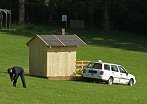






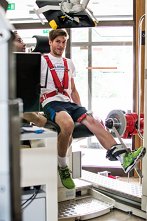

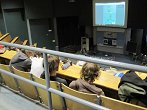


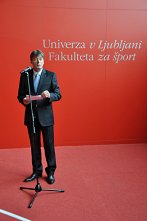
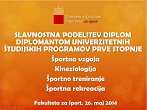
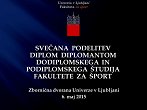





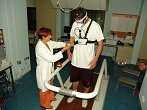

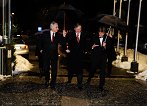


.png)